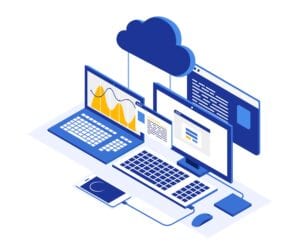It is no mystery that cloud computing is becoming more and more ubiquitous, so let’s take a closer look at the potential of Enterprise Content Management systems in the Cloud, and what can it bring for your organization.
As we wrote on our Top Trends of 2015 in the ECM World article, cloud computing is set to shape the landscape of 2015, something that Gartner also identifies in their Top 10 Strategic Technology Trends of 2015. Before diving into benefits the cloud brings to the ECM industry, let’s put everybody on the same page and demystify the technical terms of the Cloud.
You Said Cloud Computing?
Cloud computing comes in different shapes and forms, and it is always better to get some knowledge before making any decision for your company;
- Private, which means that it is kept behind the corporate firewall, which is akin to the On-Premise datacenters you are familiar with. While being referred to as cloud, keep in mind that the general word “Cloud” is commonly used to designated Public/Hybrid Clouds.
A private cloud can either be an On-Premise Private Cloud (also known as Internal Cloud) hosted within the organisation’s very own data center. Requires hardware investment and capital, as well as operating costs. While offering high security level and protection, it is however limited when it comes down to scalability. It can also be an Externally Hosted Private Cloud, which is hosted by an external provider, the costs, functionalities and limitations being quite similar (more elasticity to be noted).
- Public Clouds, which are managed by third-party cloud providers. On the ‘downside’, the infrastructure is the same for all users, as well as the security and protection standards. On the up side, the costs are lesser and the scalability and collaboration capabilities are much higher.
- Hybrid Clouds, basically a bridge between private and public cloud, combine the advantage of private and public clouds to get the best of both worlds: great security standards, flexibility, and scalability. It requires both on-premise datacenters and off-site servers.

ECM and the Cloud
The ECM industry has a lot to gain from the Cloud’s uprising and a number of ECM leaders are already offering cloud services – whether private, public, or hybrid – such as OpenText, IBM, Alfresco, and EMC Documentum, to only name a few.
The benefits of ECM on the Cloud (aka Public) are multiples:
- Fast-start up since no hardware or software are needed. You can expect to have it up and running in days or weeks.
- Mobility: access all your content remotely through any devices
- Reliability: Disaster Recovery assured thanks to off-site data backups and accessible at any time
- Scalability: The Cloud will scale to your needs
- Lifecycle management: easier to run applications, no need for installation or device configuration, and automatic syncing keeping all content up to date
- Integration: On of the greatest assets of the Cloud is the ability to integrate it with various other back-end systems, which eliminates also manual re-entry of data.
- Affordable: much lower start up costs and cost of ownership

Of course, Public Cloud may not be the best fit for some companies that have to comply with standard security levels or that wish to keep their on-premise storage. For those, Hybrid Cloud offers the perfect alternative by combining the benefits of on-site storage of asset data with the advantages of Cloud-based deployment as listed above (while still requiring hardware investment).
Some others who might not be ready or interested in joining the Cloud can consider the more traditional private clouds (on-premise or externally hosted) to manage their content while enhancing collaboration within their own organization.
Basically, the choice of storage comes down to your needs and to your content. The Alfresco’s “20-60-20” rule illustrates well the way content can be categorized and deployed:

Alfresco assessed that 20% of your content will stay on-premise, 20% will move to the cloud, and 60% will be in or moving between both according to their nature.
So what can be taken from that? That on-premise is still necessary in most businesses and will be for some time, but Cloud and Hybrid solutions are the way we are currently heading and will most likely shift from being an asset to a commodity in a matter of time. If we could give you a last advice, it would be to keep an eye on the Hybrid model which has been making a lot of waves since the beginning of its commercialization.[/vc_column_text][vc_empty_space height=”70px”][vc_column_text]





